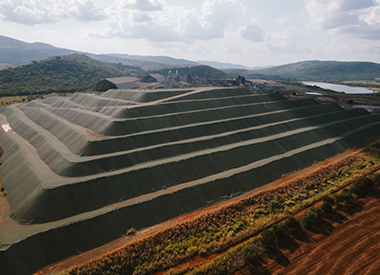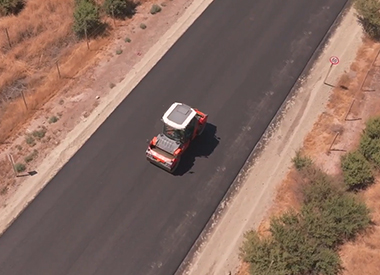The LEAP (locate, evaluate, assess and prepare) approach, developed by the Taskforce on Nature-related Financial Disclosures (TNFD), is designed to help companies identify and assess nature-related issues, and then integrate nature related considerations into their strategic planning and reporting processes, with the aim of promoting sustainability and resilience.
The LEAP process, integral to the TNFD framework, is summarised below:
- Locate: Identify where your organisation interacts with nature
- Evaluate: Assess your dependencies and impacts on nature
- Assess: Analyse the risks and opportunities related to nature
- Prepare: Develop strategies to respond to and report on nature-related issues.
Piloting LEAP at Kumba Iron Ore
Understanding how we affect nature is critical to achieving our Sustainable Mining Plan goal of achieving net-positive impact (NPI) across our operational footprint by 2030.
We believe that the TNFD framework is the most robust and practical guidance to help us achieve our goal.
During 2022, our Kumba Iron Ore business was chosen as the pilot site and we worked with our longstanding partners Fauna & Flora to test the application of the LEAP approach.
Although Kumba’s direct impact on nature in the vicinity of its operations is well understood, assessing the impact of Kumba’s supply chain on nature and biodiversity – a critical element of the TNFD framework – is more difficult to achieve.
As Kumba has over 2,000 suppliers within its supply chain, it was essential to prioritise the suppliers, based on their potential environmental impact and total spend.
Locate
The first step was to map the locations of key supply chains and customer assets using supplier-spend data, self-declared value chain information, open maps and data from public authorities, and international trade data.
Using the resultant co-ordinates, supplier and customer sites were overlapped with the Resolve Ecoregions map to identify their biomes.
Priority locations were then identified based on the following criteria: overlap with high ecosystem service related risk; convergence with areas of high biodiversity importance; physical water risk and freshwater biodiversity.
Based on the prioritisation criteria, three supply chains were given precedence and taken forward to the evaluation stage: two in energy and one in rubber production for tyres.
Evaluate
ENCORE – a free online service that helps organisations explore their exposure to nature-related risks – was used to identify material impacts and dependencies of the prioritised suppliers. In conjunction with spatial data analysis, the ENCORE scores indicated that a rubber concession area linked to Kumba’s tyre supply chain had very high risks overall, so it was selected for further analysis.
Through a more detailed interrogation of the ENCORE results and spatial data, several specific risks were identified for this rubber concession area, including a number of protected wildlife species.
Assess
The nature-related risks of the rubber plantation were evaluated qualitatively to understand how they might translate into physical, transition and reputational risks for suppliers and communities, as well as Kumba’s own operations.
This phase of the LEAP process considers both potential financial impact and the impact on nature and society. The outcome of this evaluation was shared with Kumba’s internal risk and procurement teams to enhance awareness of nature-related risks and understand how they could be better incorporated into existing risk management and responsible supply chain processes.
Mitigation measures and opportunities to address existing impacts and reduce potential risks are now being considered; for example, through working with the supplier to enhance nature-based solutions in the supplier’s landscape.
Prepare
It is important that a broad understanding of impacts and associated risks translates to changes in activities and processes at site level, both through direct operations and supply chains.
Using the lessons learnt from this pilot and the ongoing work during 2024, we have a clearer understanding of how it might be possible to adopt this approach across Anglo American as we work to implement the recommendations of the TNFD in its approach to nature management and reporting.




